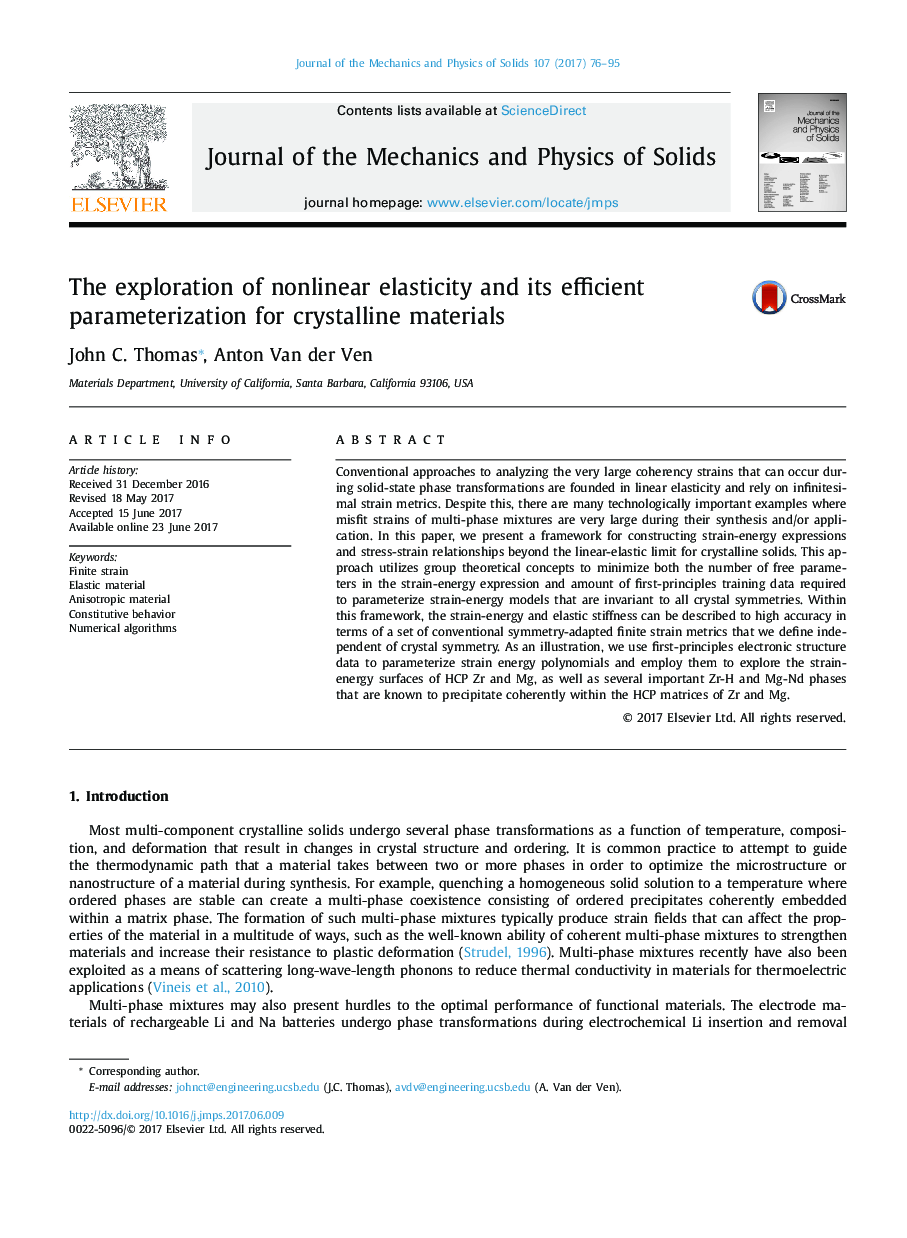| Article ID | Journal | Published Year | Pages | File Type |
|---|---|---|---|---|
| 5018167 | Journal of the Mechanics and Physics of Solids | 2017 | 20 Pages |
Abstract
Conventional approaches to analyzing the very large coherency strains that can occur during solid-state phase transformations are founded in linear elasticity and rely on infinitesimal strain metrics. Despite this, there are many technologically important examples where misfit strains of multi-phase mixtures are very large during their synthesis and/or application. In this paper, we present a framework for constructing strain-energy expressions and stress-strain relationships beyond the linear-elastic limit for crystalline solids. This approach utilizes group theoretical concepts to minimize both the number of free parameters in the strain-energy expression and amount of first-principles training data required to parameterize strain-energy models that are invariant to all crystal symmetries. Within this framework, the strain-energy and elastic stiffness can be described to high accuracy in terms of a set of conventional symmetry-adapted finite strain metrics that we define independent of crystal symmetry. As an illustration, we use first-principles electronic structure data to parameterize strain energy polynomials and employ them to explore the strain-energy surfaces of HCP Zr and Mg, as well as several important Zr-H and Mg-Nd phases that are known to precipitate coherently within the HCP matrices of Zr and Mg.
Related Topics
Physical Sciences and Engineering
Engineering
Mechanical Engineering
Authors
John C. Thomas, Anton Van der Ven,
